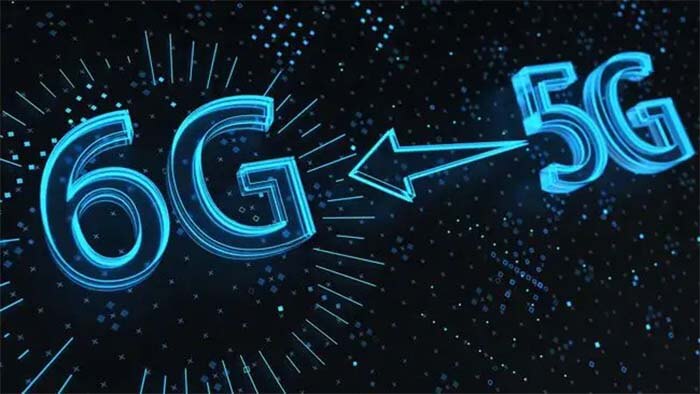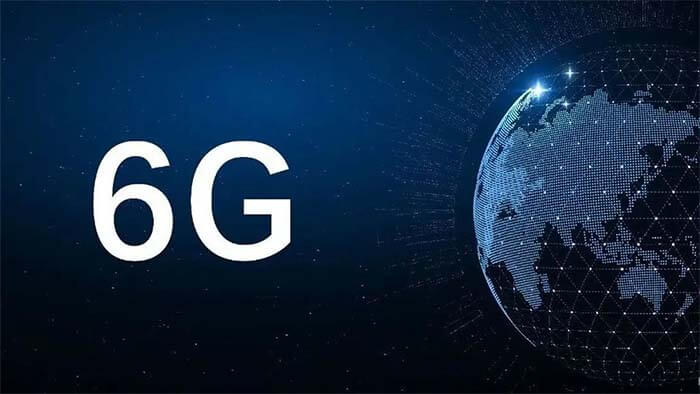What will the 6G world look like? In 2019, engineers from telecommunications companies around the world sit in a large conference hall in Geneva, trying to envision how people will live and communicate in a decade.
They gathered at the International Telecommunication Union (ITU), the professional body of the United Nations, to try to formulate the foundations of sixth-generation network technology – even before fifth-generation network technology has fully proven its worth.
“It’s about determining the gap between what consumers want and what the network can do,” says Magnus Frodi, head of Ericsson’s research division. “We are guessing what those gaps will be.”
Unlike some of the more organic technological innovations of the past half-century, network evolution has historically been divided into 10-year time periods, each of which has produced a new “generation.
The 1980s brought 1G, a voice-only analog service; 2G in the 1990s offered short message service (SMS) and picture messaging; 3G in the 2000s offered more data, video calling, and mobile Internet; and by the end of that decade, 4G was 500 times faster and supported mobile TV, video conferencing and real-time applications.
Then, a few years ago, 5G was all the rage. It promised low latency (limited latency) and the ability for thousands of machines to communicate with each other simultaneously.
Basic research into sixth-generation communications began back in 2017.
But now that 5G has arrived, some consumers are still asking what real-world benefits it offers. There is a sense among some in the telecommunications industry that it may be time to move beyond “Gs” and toward more organic change. Not likely to lead to disappointment.
After all, some of the biggest changes each “G” brings come from that generation – not from switching to the next.
I personally think it’s crazy for the industry to be in a 10-year cycle when the world changes overnight,” says Ronny Hadani, chief scientific officer at Cohere Technologies, a spectrum software company. The cloud is updated once a week.”
Santiago Tenorio, director of network architecture at Vodafone, believes that the industry should let the 6G would be the non-G. In the hypothetical next generation, we’re hardly missing anything. No one needs 6G,” he even noted.
“The industry should let the 6G would be the non-G,” he says. “In a hypothetical new generation, we’re leaving almost nothing out. Improved services and applications would be better.”
Nevertheless, despite opposition, momentum is building for the 6G world. Ericsson now has dozens of researchers fully committed to 6G research, Frodi said.
He added that testbeds could begin to emerge as early as 2024, and the first version of the standard – which shapes how networks operate around the world – could be ready by 2028.
“We’ll be updating 5G over the years, but it will require more capacity, more features, and that will become increasingly difficult to add,” he said.
“Many things are a continuum, but sometimes there’s logic in separating the evolution.”
What will the 6G world look like?

Research is in its infancy, but operators and network providers are starting to focus their thinking on certain themes that faster speeds, higher data processing, and lower latency will achieve.
With the advent of 5G world, we’ve heard some of this before, including smart machines that connect to each other and share data seamlessly. These interconnected machines will be ultra-smart, with some degree of access to delivery robots and drones, as well as a fully functional, highly connected “smart city.
Another theme is the “cyber-physical continuum,” whereby the digital world is seamlessly integrated into the natural, physical world.
Others, however, are more confusing – such as Ericsson’s “Internet of the Senses” concept, in which people may be able to smell, feel and taste things in a digital world.
“Interacting with the Web in a more immersive way – that’s what 6G world might enable,” Frodigh claims.
Another theme is known as the “cyber-physical continuum,” where the digital world seamlessly blends into the natural physical world – something that is only possible if latency or processing delays are almost completely eliminated.
Much of the thinking on this comes from augmented reality and the growing fervor generated by the vague and uncertain idea of virtual worlds or “metaverse.
We could reach the stage where “almost everything has a digital twin,” says Flordi.
That would allow Web users to make real-time models of things and go back in time [in that twin world] to analyze what went wrong or to simulate what might happen in the future.
The network also needs to evolve to become more homogeneous and embed artificial intelligence in it to make it smarter, more responsive, and able to repair itself, explained Henk Koopmans, CEO of Huawei’s R&D department. “It’s about the intelligence of everything,” he said.
What do we need to do to make 6G world a reality?
Frodi believes the best thing operators can do to prepare for 6G world is to continue to invest and build out 5G networks.
“You will have a good network, you can upgrade it, and you have the customer base so you can make money from it,” he says.
The similarity in the spectrum and wave structure means the network can be reformed incrementally without having to dismantle the infrastructure and start over, Frodigh added.
But, he said, a big research question for 6G world is whether the network can use higher spectrum frequencies – with propagation characteristics more like visible light.
This will require adding more signal access points to the environment (for example, in residential streets) to transmit the signal.
Ronnie Vasishta, senior vice president of telecommunications at Nvidia, noted that sophisticated artificial intelligence will be a requirement for any “beyond 5G” network and that companies serious about network evolution should invest in it.
For now, however, much of the work to develop next-generation networks is being done behind closed doors. After all, the industry could lose credibility by talking about 6G world before 5G world is actually delivered.
Besides the What Will a 6G World Look Like article, you may also be interested in the below articles.
What Is The Core 5G NR Technology?




